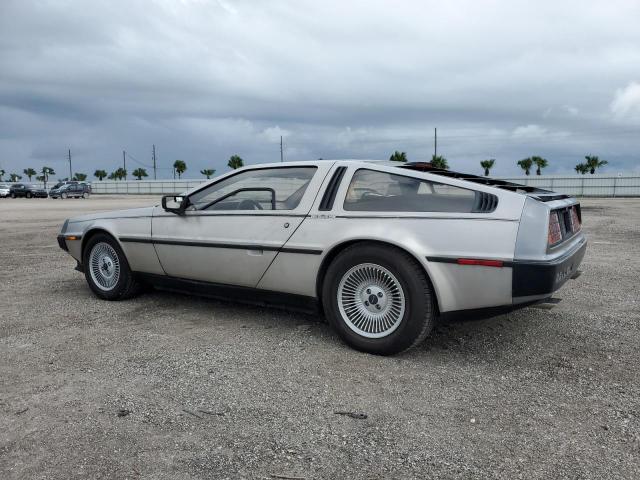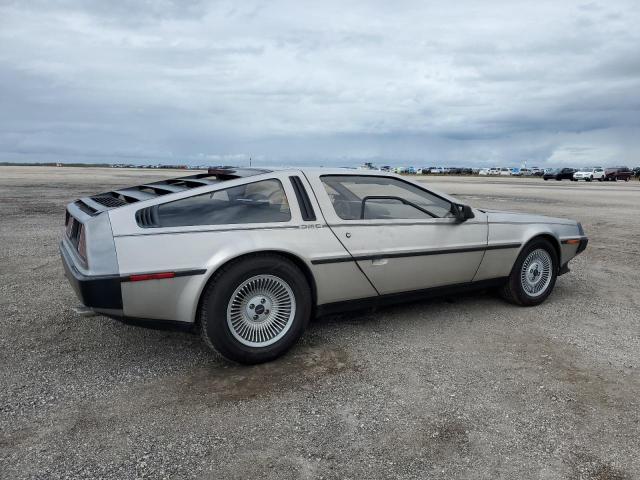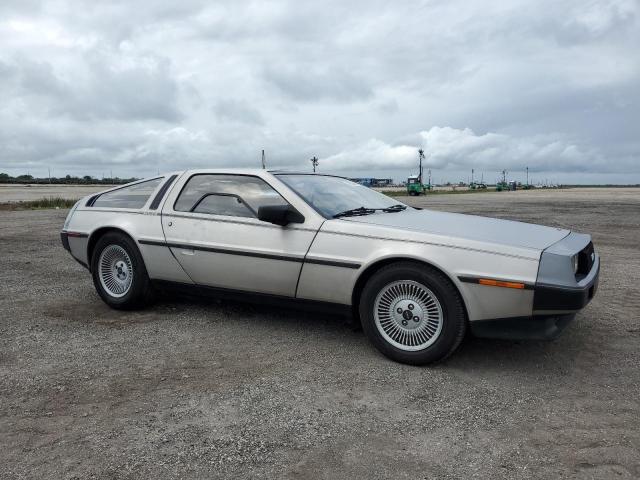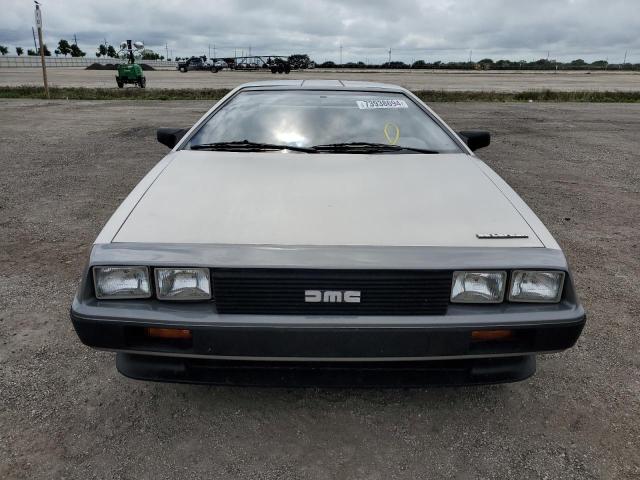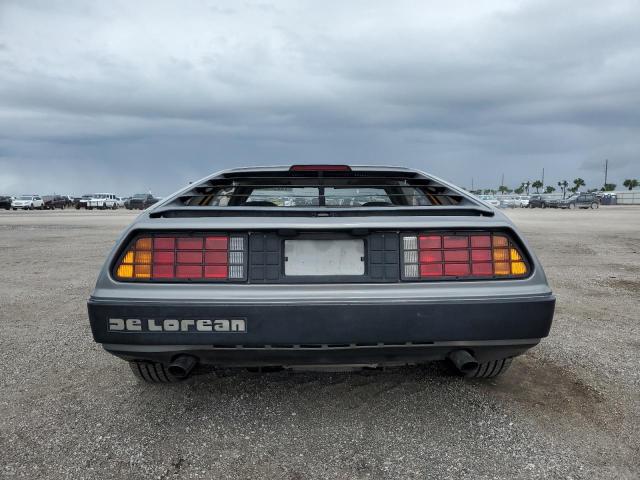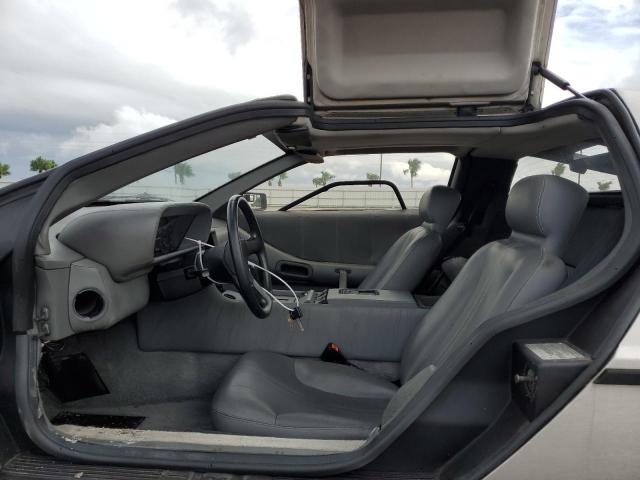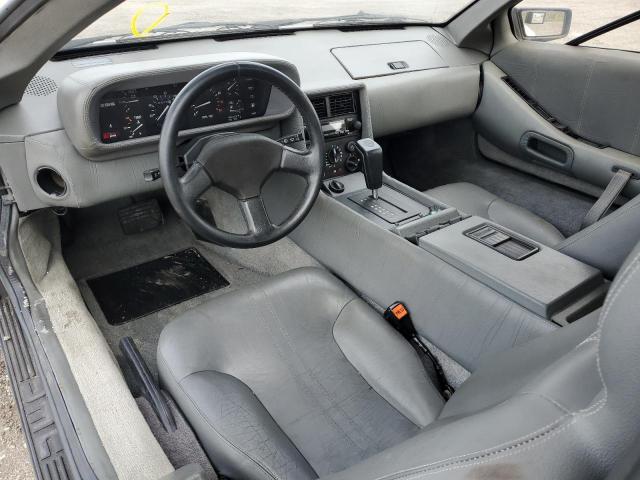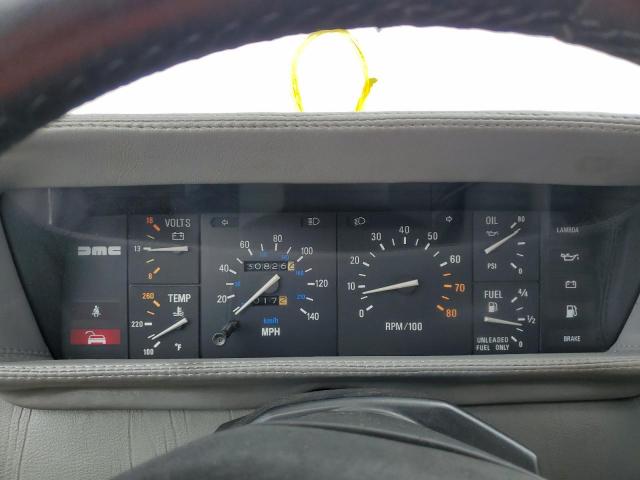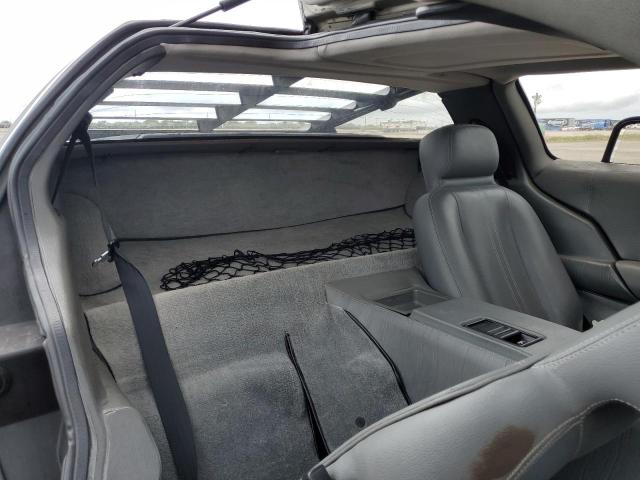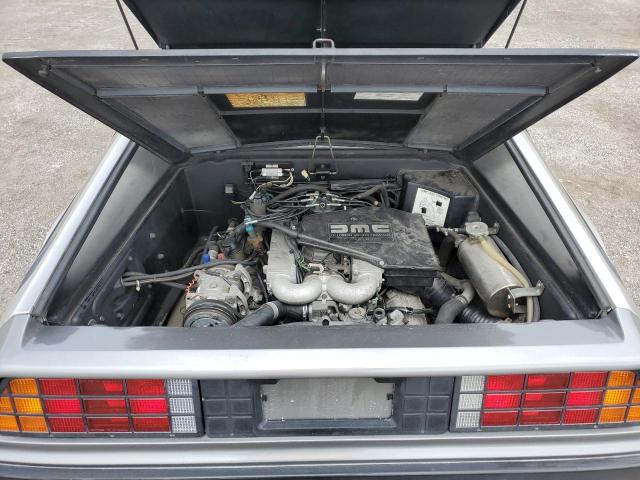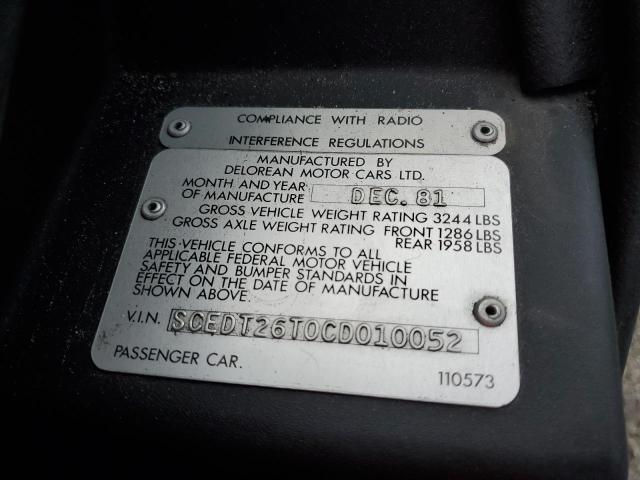1982 DELOREAN DMC-12 | SCEDT26T0CD010052
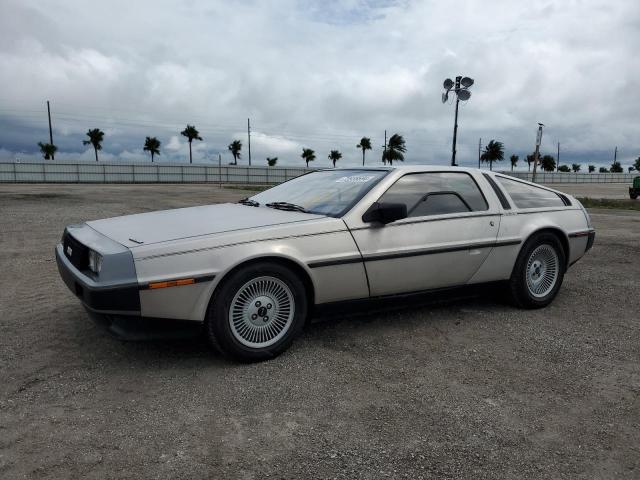 ❯
❯Lot details
- Sale Date22/Oct/2024
- Lot Number73938694
- ACV$80,000
- Sale document
- Location
- Odometer30,826 miles
- Primary Damage:WATER/FLOOD
Vehicle specifications
1
~$25,000
Engine: 2.85L naturally aspirated V6
Torque: 207 Nm
0–100 km/h: ~8.8 s
The DeLorean DMC-12 was never built for outright performance — it was designed as a futuristic GT with dramatic style and premium intentions. Its PRV 2.85L V6 (a joint venture between Peugeot, Renault, and Volvo) produced 132 hp and 207 Nm, enough to propel the car from 0–100 km/h in 8.8 seconds with the manual transmission. While modest by sports car standards even in the early 1980s, the DMC-12’s low weight (1,230 kg) and rear-engine layout gave it respectable balance and driving feel.
Handling was tuned with Lotus assistance, featuring a double-wishbone front suspension and multi-link rear, supported by coil springs and telescopic dampers. The mid-rear weight bias gave the car a unique, slightly tail-happy character that could be enjoyed by skilled drivers. Ventilated disc brakes on all four wheels provided confident stopping power, though the 3-speed automatic option blunted performance significantly.
Despite lacking the raw speed of rivals like the Porsche 911 SC or Corvette C3, the DMC-12 offered novelty, balance, and everyday usability — its true "sport" being a fusion of Hollywood flair, Lotus input, and automotive ambition.
Final Bid Delorean DMC-12 (1982)
$36,750
$36,750
$36,750
Body Styles
The DeLorean DMC-12 was built exclusively as a two-door, two-seat coupe, characterized by its brushed stainless-steel body panels and signature gull-wing doors. The car's body was designed by Giorgetto Giugiaro of Italdesign, with sharply creased lines, a wedge-shaped nose, and wide, flat rear fenders that gave it a futuristic and exotic stance.
Underneath the stainless panels was a fiberglass underbody bonded to a steel backbone chassis, inspired by Lotus engineering. The low-slung proportions, wide rear track, and flush, unpainted finish gave the DMC-12 a science-fiction aesthetic, while its compact footprint (4.2 meters long, 1.85 meters wide) and low roofline reinforced its sports car identity. The gullwing doors were supported by torsion bars and gas struts, allowing them to open in tight spaces — a practical and theatrical flourish.
Model Name Meaning (Manufacturer)
“DMC” stands for DeLorean Motor Company, founded by John Z. DeLorean, a former GM executive known for his rebellious vision. The “12” in “DMC-12” originally referenced the car’s intended $12,000 price point, although production costs later pushed the price significantly higher. Despite the misleading number, the DMC-12 became a unique brand in itself.
Body & Interior Colors and Rims
The DeLorean DMC-12 was one of the most visually iconic cars of the early 1980s — not because of its color variety, but precisely because it defied the norms of paint altogether. Every DMC-12 left the factory with a brushed stainless steel body finish, using unpainted SS304 panels mounted over a fiberglass underbody and steel backbone chassis. This unique metal surface gave the car a cold, industrial sheen, unmatched by any painted vehicle. The grain of the stainless steel ran in a consistent direction, and owners were cautioned against waxing or polishing the panels to avoid disrupting the finish. The result was a timeless, unchanging exterior — futuristic, durable, and instantly recognizable.
A very limited number of gold-plated DeLoreans (using 24-karat gold leaf) were produced as part of a promotional partnership with American Express — only two were officially built and sold, making them ultra-rare collectibles. Some owners later painted their DeLoreans post-purchase, but factory color variety was nonexistent by design.
Interior choices were limited to two color schemes: Black and Gray. Both used leather upholstery, with ribbed seat inserts, padded door panels, and matching carpeting. The dashboard was a simple, driver-focused layout with analog gauges, rotary HVAC controls, and a digital clock — framed by a two-spoke steering wheel. The cabin included brushed aluminum accents, power windows, and manual-adjustable leather seats. The center console extended from the dash to the rear firewall, with integrated storage cubbies and a handbrake lever. Build quality varied across early models, but later units saw refinements as production stabilized under Consolidated International.
All DMC-12s rode on distinctive cast alloy turbine-style wheels, designed by Giorgetto Giugiaro to match the angular styling of the body. The wheels were 14 inches in the front and 15 inches in the rear, emphasizing the car’s rear-biased layout. Tires were Goodyear NCTs, mounted on flat-faced rims with deep-dish rear wheels and subtle center caps embossed with the DeLorean logo. The wheels featured a brushed silver finish, adding to the mechanical aesthetic and enhancing the car’s squat, wide stance.
This combination of bare metal bodywork, simple two-tone interiors, and iconic turbine wheels helped the DeLorean DMC-12 stand apart not just from other cars of its time, but from virtually every car before or since — its design resisting fashion in favor of permanent icon status.
Top Expensive Options
- 3-Speed Automatic Transmission: $650
- Factory Installed Craig Radio/Cassette Stereo: $300
- Floor Mats with DMC Logo: $70
- Dealer-Installed Rear Luggage Rack: $200
- Gold-Plated 24K Body Panels (American Express LE model): $85,000
- Custom Cover or Car Care Kit: $50–$100
vs Competitors
The DeLorean DMC-12 competed loosely with the Porsche 911 SC, Chevrolet Corvette C3, Lotus Esprit, and Ferrari 308 GTS, yet was unlike any of them. It lacked their outright speed, but matched them in visual drama and design innovation. The DMC-12 was more comfortable and practical than the Esprit, more unique than the Corvette, and far more futuristic than the 911.
Its biggest strength lay in its design, doors, and mystique — not its lap times. The DMC-12 wasn’t about numbers, but about presence. It offered a sense of rebellion and glamour, appealing to those who wanted something no one else had, with performance that was “enough” for daily enjoyment.
Fun Fact
The DeLorean DMC-12 became world-famous as the time machine in the “Back to the Future” film trilogy, where Doc Brown converted it into a plutonium-powered vehicle capable of jumping through time. This Hollywood exposure cemented the car’s place in pop culture, turning a commercial failure into a cult legend. Ironically, the movie’s timeline begins in 1985 — two years after the car had already been discontinued due to the collapse of the DeLorean Motor Company.

